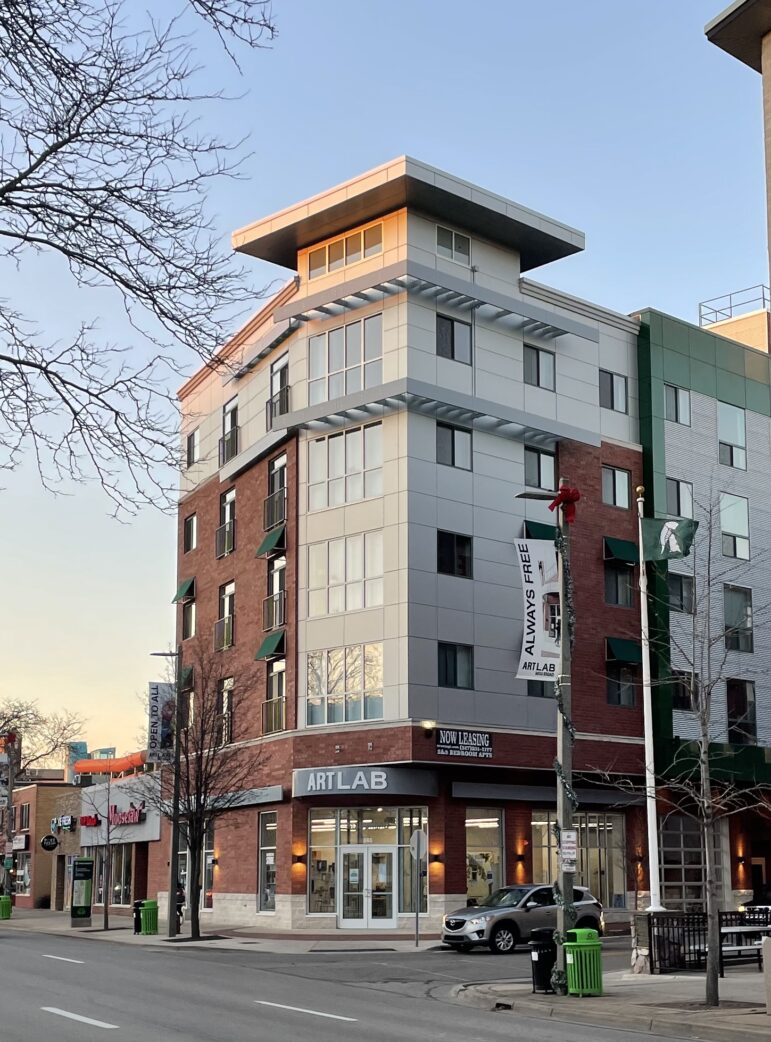
Kurt Schneider
With more 7,000 square feet, the Art Lab’s previous home is now one of the biggest plots of open real estate on Grand River Avenue.As a radical example of architecture and design, the Eli and Edythe Broad Art Museum has been a space-aged home for creatives and art lovers alike. With a decade of campus involvement and more than 125,000 visitors yearly, architect Zaha Hadid’s Pritzker Prize-winning design has had a drastic impact on the city of East Lansing while exploring a restorative solutions-based approach to the arts.
While the museum’s sleek mix of unique angles and perspectives houses most of its exhibition space and collections, in 2017 the decision was made to open a location across the street from Michigan State’s campus. With more than 5,000 sq. ft. of space, the MSU Art Lab’s intended goal was to be an explorative space to introduce the community to arts, creativity, and hands-on activities. For five years, numerous student exhibitions, pilot programs and engaging workshops have been hosted and made available to the public, free of charge.
Now, half a decade later, “for lease” and “permanently closed” mark the Art Lab’s windows at 565 E. Grand River Ave. However, “The Art Lab was always a five-year project, an incubator space for experimentation, funded in part by the MSUFCU,” said Mónica Ramírez-Montagut, director of MSU Broad. With 20 years of arts and culture experience, Ramírez-Montagut said, “The Art Lab was a tremendous success in terms of community engagement. Everything we learned through these interactions and many of the programs piloted there will now take place across the street at the museum.”
In this way, even with the closing of one collaborative space, the experiment in design will continue. Even with the COVID-19 pandemic and financial constraints, the Art Lab managed to be a discernible connection between Michigan State’s campus and the community north of Grand River, allowing for all to engage, learn, have fun and come together under one roof.